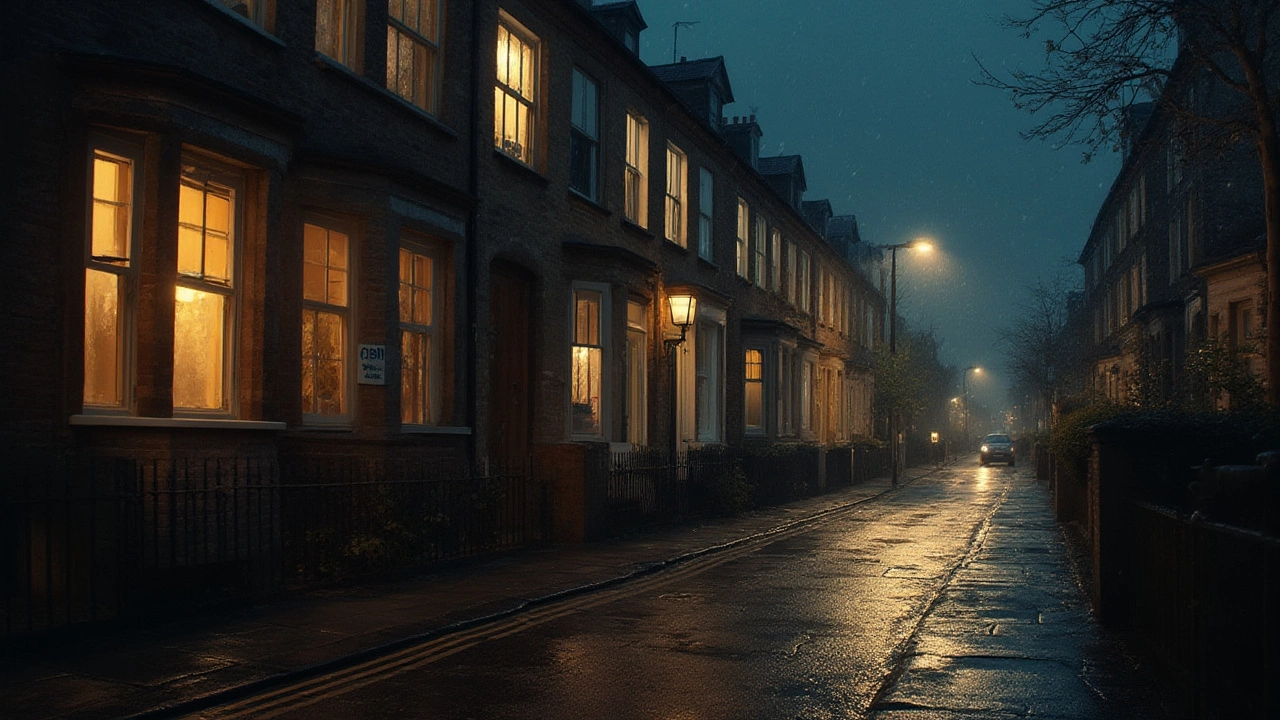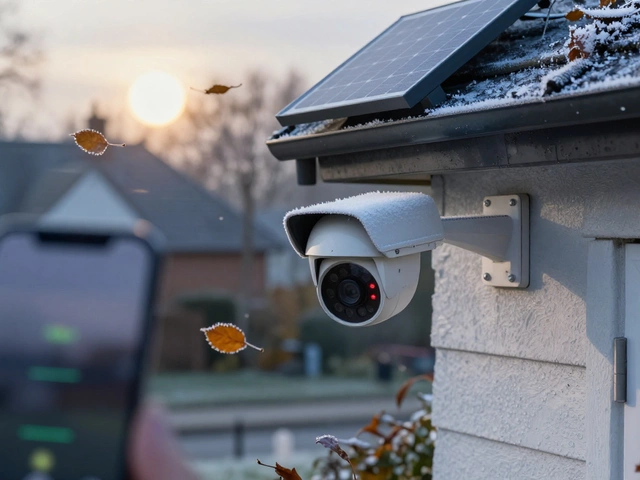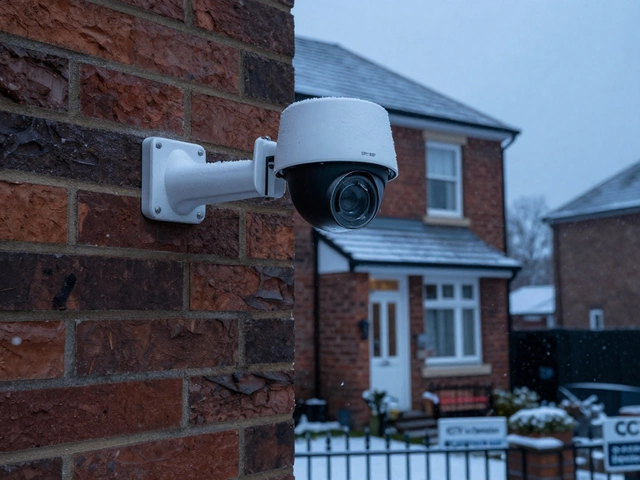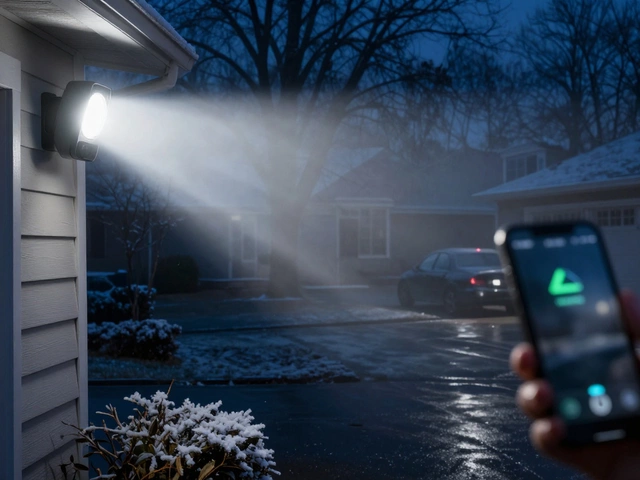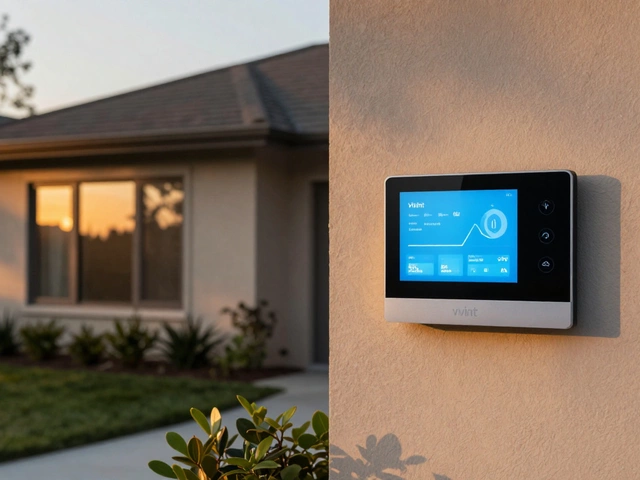If you're like most people, you probably feel safer leaving a few lights on when you’re out. The glow through your curtains feels comforting, like a little sign that says, "Someone’s home—move along." But here’s the kicker: there’s a huge gap between what feels safe and what’s actually effective. Over the years, I’ve talked with local cops here in Wellington and nosy neighbors alike, and it turns out the habits of burglars aren’t quite what most folks think. Let’s dig in and see whether flipping that switch really keeps you, your family, and your stuff out of a thief's reach.
What Burglars Actually Notice When Scoping a House
The idea that lights alone scare off burglars has been around for decades, passed around like old family recipes or folk wisdom. But burglars aren’t scared of a 40-watt bulb. In fact, a study by the University of North Carolina surveyed over 400 convicted burglars, asking them what really made them skip a house. The most common answers? Security cameras, barking dogs, and clear signs of someone home—like noise or visible activity.
Now, don’t get me wrong—lights do play a role. Police reports across New Zealand and Australia over the last few years still rank darkness as a favorite for criminals. But the moment a thief notices the porch light never goes off, or the lounge glows at 2am every night even while it’s silent and still? That’s a red flag to them: the lighting is automated or left on for effect, not because someone’s inside.
Here’s a real curveball: seasoned burglars sometimes use lights to their advantage. Some will hang around a well-lit house, pretending to be neighbors or delivery drivers, waiting for a chance. With enough confidence, they blend right in—looks can be deceiving, and a bright front yard won’t stop a determined crook from ringing your bell to check if anyone answers.
But there are situations where lighting works as a deterrent. Motion-activated spotlights at back entrances or garages give a would-be thief a heart-stopping moment—nobody wants surprise attention. That’s especially true here, where lots of folks have garages tucked down alleyways or driveways that barely get streetlight coverage. Still, lights alone rarely do the trick.
Digging deeper, councils across New Zealand sponsor annual home safety audits, and data from investigations consistently show the least-inviting homes to burglars use a combination of real activity (like vehicles moving, TVs or radios on timers, or noisy pets), plus smart lighting, not just a porch light blazing for twelve hours straight.
If you ever browse community social media groups, you’ll see people warning about the "knock and wait" trick. Thieves knock, and if nobody answers, they might sneak around back. A light in the window doesn’t matter to them if the house is clearly lifeless. Think about those long holidays away during winter. Burglary rates go up—not because lights are off, but because houses broadcast their emptiness by being too quiet or predictable, even if the lights are burning.
Here’s a quick table showing the responses from the North Carolina Burglar Survey that’s echoed by New Zealand’s own police intelligence:
| Home Feature | Effectiveness as a Deterrent | Notes from Offenders |
|---|---|---|
| Lights left on | Low to Moderate | "Only when combined with other signs of life." |
| Motion-activated lights | Moderate to High | "Surprise and exposure more effective than steady light." |
| Security cameras | High | "I’d usually leave if I saw a camera." |
| Barking dogs | High | "I hate dealing with dogs." |
| Visible activity | Very High | "If I hear people, I keep moving." |
So, while lights aren’t useless, they’re just a piece of the puzzle, not the magic answer.
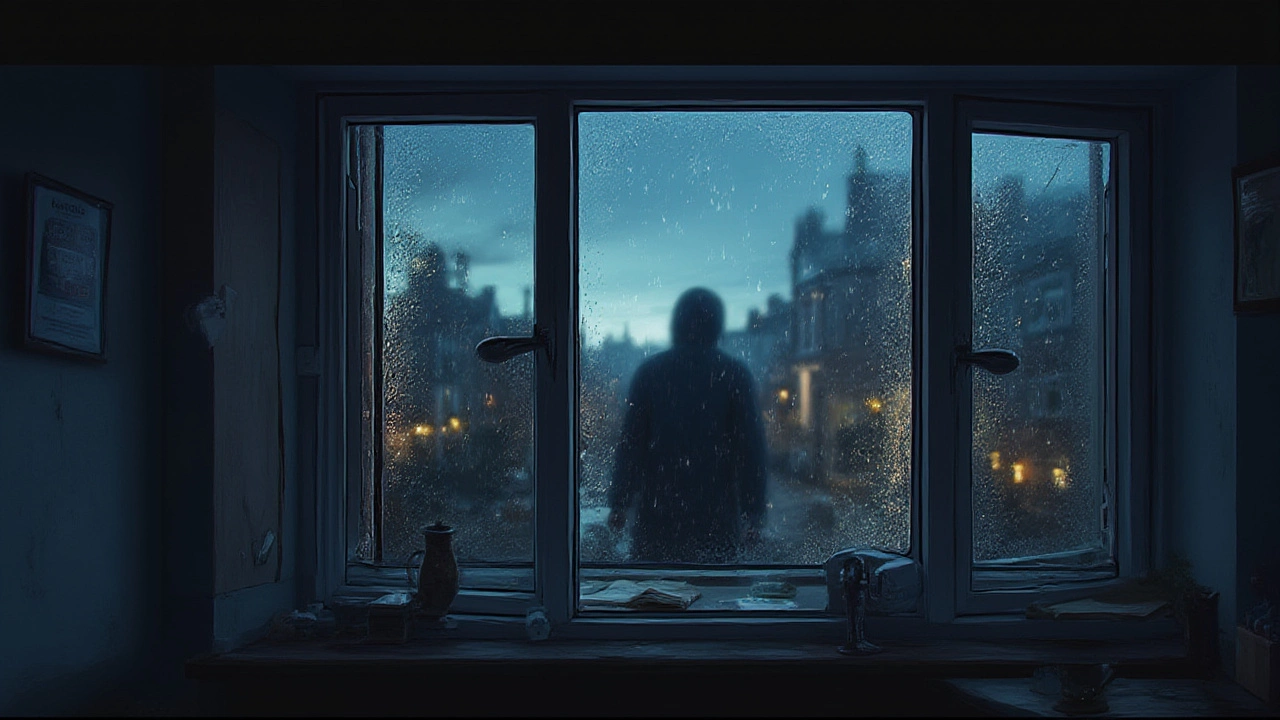
Lighting Tricks That Work (And Which Ones Are Useless)
Some folks leave the exact same lamp on 24/7 before heading to Queenstown for ski season. You might as well put up a sign that says, "I’m not coming back for a week." Professional thieves recognize these patterns and don’t get fooled by static lighting. That desk lamp in the window or porch light blaring around the clock? It can even help them see the way.
So what actually works? Flexibility. The best lighting setups mimic normal human habits. Smart bulbs that you control from your phone let you switch rooms, dim the brightness, or even make it look like you just sat down to dinner. Some systems can be programmed to turn on and off at different times each day—so it never feels predictable.
Another useful trick? Pair lights with the sounds of life. A radio in the hallway or a scheduled TV session adds legit unpredictability. Thieves hate not knowing if you’ll pop back for a forgotten wallet or break their silence with the kettle boiling.
And don’t skip motion sensors, especially in places thieves like to poke around—side gates, sheds, and that dodgy fence gap at the back. These sudden bursts of light can make a trespasser jumpy, especially when combined with anything else—maybe a camera out front, or signs warning about one. Even a dummy camera, if it looks legit enough, can make many criminals think twice.
If you’re knee-deep in trade magazines and police newsletters like I am, you’ll notice something: burglars work fast. The average house burglary takes less than 10 minutes. They want easy wins. If your place puts up multiple hurdles—odd lighting schedules, cameras, prickly hedges near windows, a car in the driveway—they’ll quickly decide to bother someone else. Most break-ins don’t involve elaborate planning. They’re crimes of opportunity, so your job is to look less convenient than your neighbors. Harsh, but true.
Here are some simple, proven steps to improve your use of light as a home security measure:
- Install smart lights or smart plugs in at least two main rooms, and use different schedules for weekdays and weekends.
- Add motion-activated lights to entrances that aren’t street-facing—the back door, side alleys, garage.
- Never leave a single lamp on 24/7 for days on end. Mix up rooms and brightness.
- Use timers strategically—pair lights with radios or TVs so activity feels authentic.
- Invest in outdoor sensor lights. Even cheap battery-powered ones add a surprise element.
- Combine lighting with other deterrents—security cameras, signs, or anything that makes a crook hesitate.
The point isn't to turn your home into Fort Knox. Small, sensible upgrades make your place look like more trouble than it’s worth. Lighting can't do everything, but when used right, it forces someone looking for an easy job to keep walking.
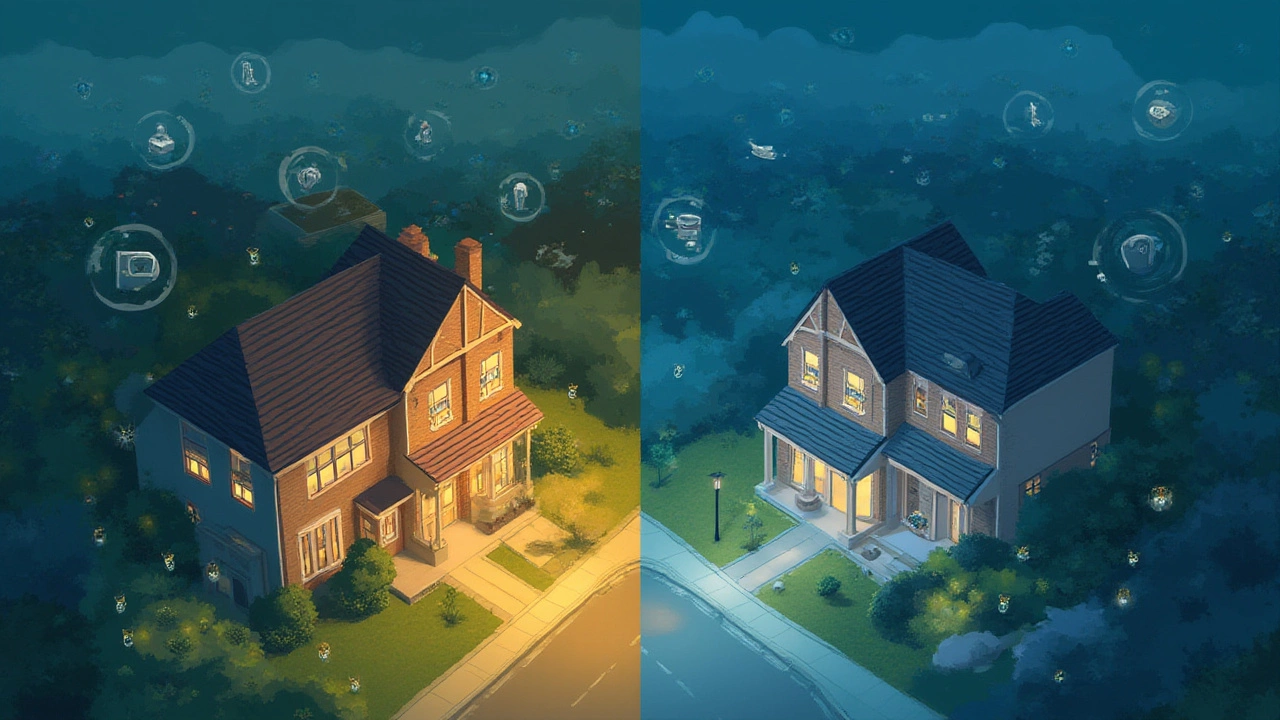
Beyond Lights: Why Layered Security Matters Most
This is what it really comes down to—the burglars and lights debate is too simple. Professional thieves look for weak links, not just whether you remembered to turn the kitchen lamp on before leaving. That’s why cops and security experts always talk about "layered" security. It’s a bit like wearing both a belt and suspenders. If one thing fails, the next kicks in.
Here in Wellington, I’ve seen neighbors swap stories after break-ins: the houses hit aren’t the oldest or even the flashiest. They’re usually the ones with a side gate nobody can see, or routines that never change. The ones where mail piles up, no sound comes from inside, and the afternoon sun catches the same empty chair every day. These little details matter way more than whether the porch light’s on.
Want to stop looking over your shoulder every time you leave home? Think wider than a lightbulb. Simple changes go a long way:
- Set up visible security cameras—even a basic, well-placed unit over your front door sends a message.
- Lock side gates and sheds. Add motion sensors in poorly lit spots, and keep paths free of overgrown bushes so neighbors or passersby can see odd movements.
- Consider setting up a "neighborhood watch" chat in your street. Burglars hate organized neighbors—nothing beats an eagle-eyed retiree with too much time on their hands!
- Don’t post your travel plans or daily routines on public social media. Modern thieves do their homework—sometimes online.
- Reinforce doors and windows. Basic window locks are super cheap and make a massive difference.
Here’s a thing they never tell you: no one measure gives complete peace of mind. Even the best lighting, if left on mindlessly, won’t stand up against someone determined or desperate. But every hurdle you put in the way—lights, cameras, good locks, unpredictable routines—adds up. Most burglars don’t want a challenge; there are always easier targets.
If you want to take things even further, look into smart sensors that text your phone if they’re tripped, or ask a friend to swing by and shuffle the curtains or put out a rubbish bag while you’re away. Tech is making it easier for honest folks to set traps for thieves, without spending thousands. That flexibility makes all the difference when it comes to the ever-adaptable world of burglary prevention.
The most effective home security setups feel lived-in, look unpredictable, and make a would-be burglar ask themselves, "Do I want to risk it?" Lights help, but only as one piece of that living, breathing defense. Routines that never change are the dead giveaway. Switch things up, involve lights cleverly, and throw in a few signs that you’re always around—even when the house is empty. That’s the real secret to a safe home.

